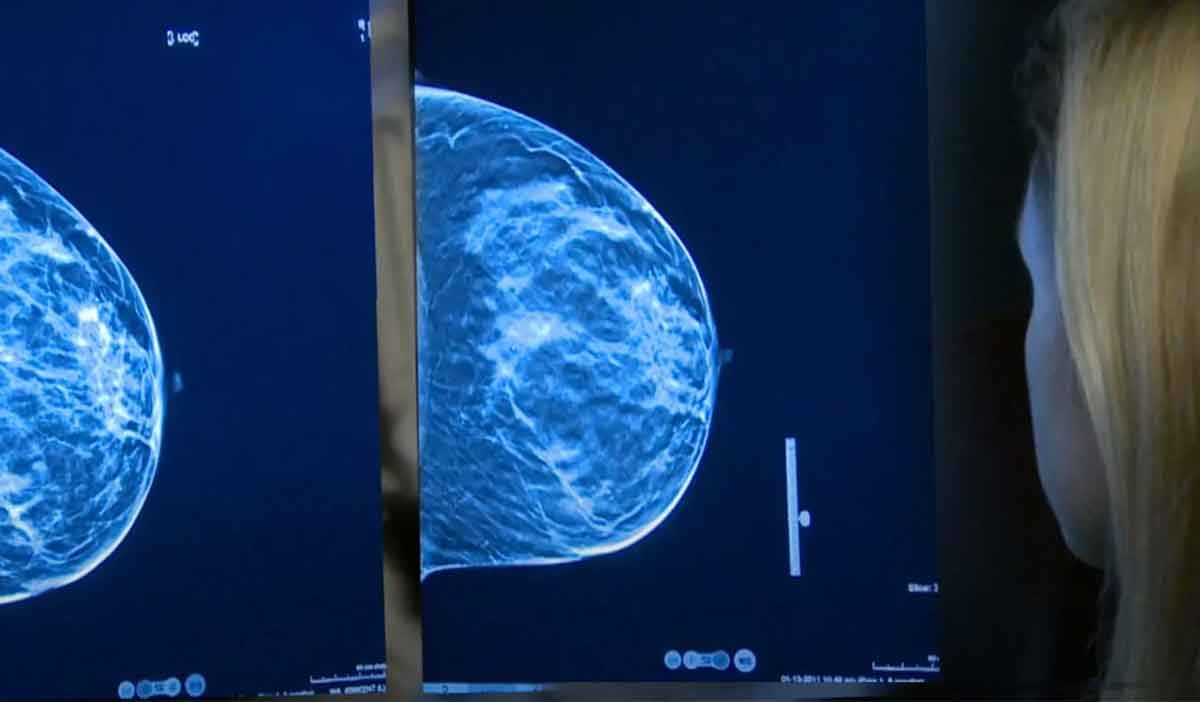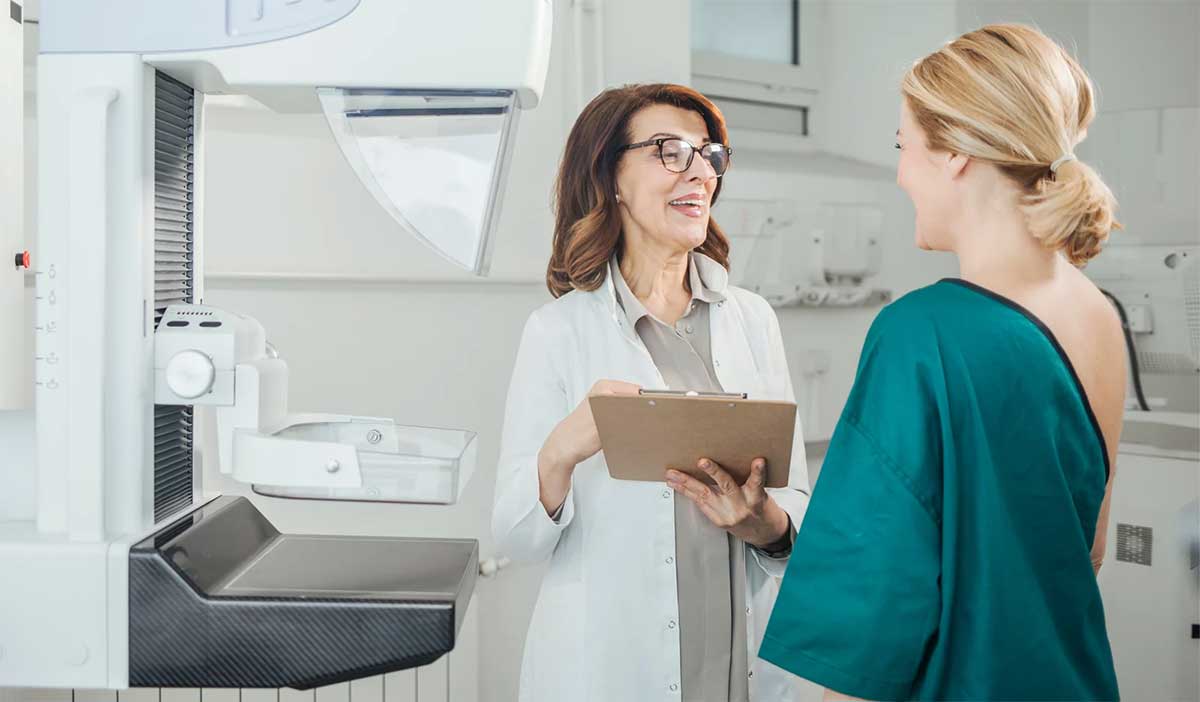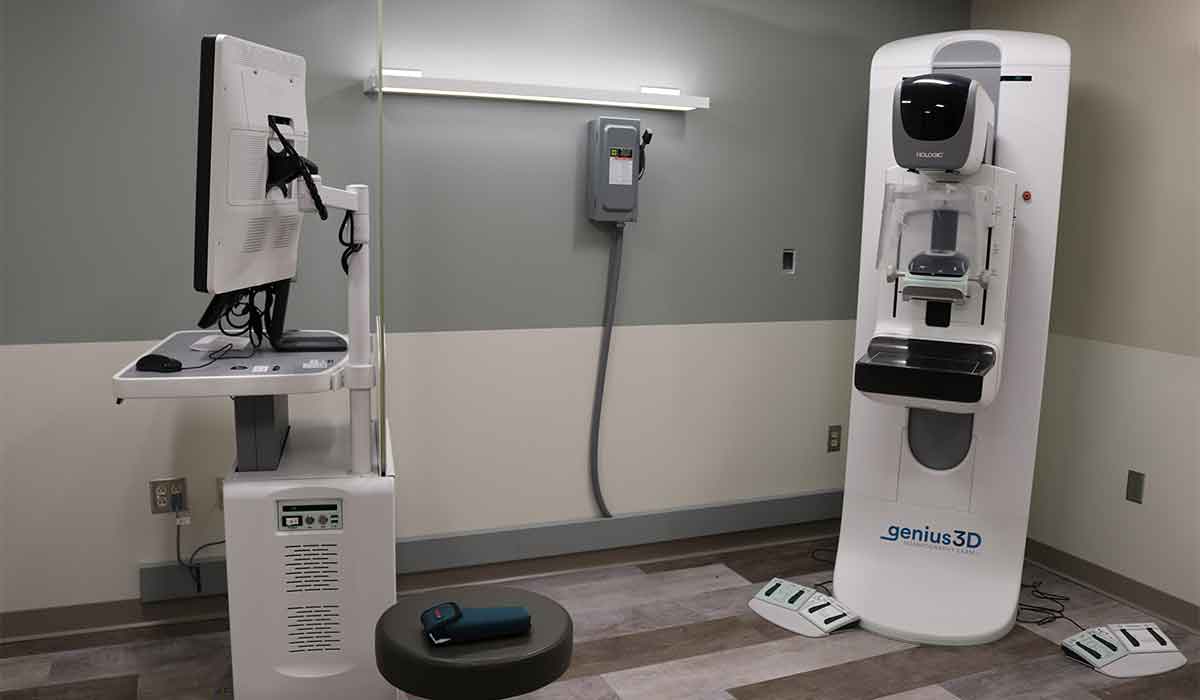The early detection of breast cancer dramatically increases survival rates, and 3D mammograms are one of the best tools available to find breast cancer in its early stages.
Unfortunately, many women put off having a mammogram, or are simply unsure about when to have one or which type of exam is best.
Read on to learn when women should start getting mammograms, how often to have them, and the benefits of 3D mammograms over conventional 2D mammograms.

What is a 3D mammogram?
A screening mammogram is a low-dose x-ray that takes a series of images of each breast. Doctors then review the images for changes in the breast from previous mammograms or issues that may indicate the presence of cancer.
3D mammography (also known as breast tomosynthesis) allows doctors to examine your breast tissue layer by layer. Instead of viewing a flat image like is done in conventional 2D mammography, fine details are more visible and no longer hidden by the tissue above or below in 3D mammograms.
During a 3D mammogram, an X-ray arm passes over the breast tissue, taking multiple images in just a few seconds. This provides your doctor with pictures of the breast in layers and gives them a clearer picture of the breast as well as any abnormalities or growths.
3D mammograms are approved by the FDA and recommended for women of all ages and breast densities. They allow radiologists to more effectively pinpoint the size, shape, and location of abnormalities in the breast.
3D mammograms also help doctors more quickly and easily see if something that might look suspicious is actually perfectly normal—which means fewer callbacks for additional testing, and less reason for you to worry.
Are 3D mammograms better than 2D?
Studies show that 3D mammograms offer improved clarity and cancer detection compared with conventional 2D mammograms. With the improved clarity, radiologists are able to confirm whether the mammogram is showing a tumor earlier in the screening process.
The Genius™ 3D Mammography™ technology used at Logansport Memorial Hospital provides better, earlier breast cancer detection. This type of mammogram finds 20-65% more invasive breast cancers than 2D mammography alone.
“3D mammograms give us a layer-by-layer view of the breast tissue,” explained Dr. Todd Weinstein, General Surgeon and Medical Director for Logansport Memorial’s Breast Care Center.
“In conventional 2D mammography, overlapping tissue is a leading reason why small breast cancers may be missed and normal tissue may appear abnormal. With this three-dimensional method of imaging that we now have with the Genius™ 3D mammograms, small tumors can’t hide behind blood vessels or dense tissue like they have previously on a 2D mammogram.”
Are 3D mammograms better for women with dense breast tissue?
Breast density refers to the amount of breast tissue that appears on a mammogram. The more fibrous or glandular tissue a breast has—and the less fat it has—the more dense the breast is.
There are four categories of breast density:
- Almost entirely fatty
- Scattered areas of fibroglandular density
- Heterogeneously dense
- Extremely dense
Most women fall into the two middle categories, while about 10% of women have what are considered extremely dense breasts.
On a conventional mammogram, dense breasts will appear whiter in color, which can make it more difficult to detect abnormalities (as abnormalities also show up white). In 3D mammograms, doctors are able to see the breast in multiple layers, which helps them better detect true abnormalities.
Regardless of your breast density, 3D mammograms are appropriate for all breast types and sizes
Who should get a 3D mammogram?
Whether you get a 3D mammogram or opt for a traditional 2D mammogram, the important thing is that you get one when it is recommended by your doctor.
The American Cancer Society recommends:
- Women ages 40 to 44 should have the choice to start annual breast cancer screening with mammograms if they wish to do so
- Women ages 45 to 54 should get mammograms every year.
- Women ages 55 and older should switch to mammograms every 2 years or can continue yearly screening
- Screening should continue as long as a woman is in good health and is expected to live 10 more years or longer
Schedule your mammogram at the LMH Breast Care Center
Logansport Memorial Hospital provides mammograms and breast care to women throughout North Central Indiana. Our Breast Center gives women one-stop for screening, diagnosis, and treatment.
We’re proud to be offering the latest advancements in breast imaging technology, The Genius™ 3D Mammography™ exam on the Hologic© 3D Mammography™ system.
Our new general surgeon, Dr. Lindsey Fleshman, specializes in breast biopsies and other surgical procedures for breast issues and is currently accepting new patients.
Request an appointmentYou might also like:


